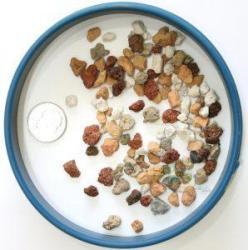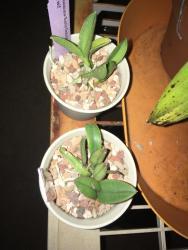If I may add to this, looking at your location -
I would pot them up into small clay pots into mostly smallish rocks mixed with small bark, for super drainage. If you can get them outside over the Summer, I would try to get them slowly used to full sun. Adjust your watering accordingly, since they will surely dry out quickly in the mix.
During your indoor season try to find a very sunny spot, intermediate temperatures/ day time 70 ish, night time 55 to 60 degr F, essentially temps you might find comfortable for yourself.
These types of Orchids might be tricky to keep happy. Personally I found no real rhyme or reason why some of these rupicolous Laelias take off, grow and bloom without a problem, while some languish along and eventually expire. Perhaps starting out with a vigorous plant is half the battle.
Nothing tried, nothing gained?
Good luck and show us soon some nice blooms!

I should add - looking at your plants with roots already growing into that mesh basket, those plants and roots look great. Perhaps just adding some smallish rocky medium is enough right there. Once you grow them in higher light, the dark green will change into a much lighter green with some reddish tint added.
Your plants are mature size.

